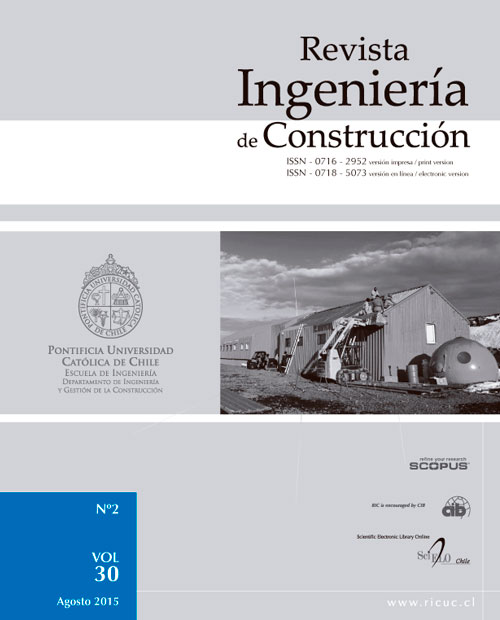A novel method of tracing the inception and progress of fatigue crack-growth in steel
DOI:
https://doi.org/10.4067/S0718-50732015000200005Keywords:
fractography, steel fatigue, fatigue striations, color code, fatigue initiation, crack advance, dimples, steel fatigue in bridgesAbstract
series of SEM micro-graphs were obtained from the cracked surfaces of samples from two types of AISI-1018 steel after applying fatigue tests at a stress ratio ofR=-1. Various strain-control levels were used in the range ±0.0008 ≤ ɛ ≤ ±0.0014 following a sinusoidal load pattern. From the many micro-graphs obtained, eighttypes of cracks were determined to be the most typical ones which are found to also be a function of the localization within the cross section of the sample. For eachtype of micro-crack, a color was assigned depending on geometrical parameters that were approximately measured (diameter for dimples and striation spacing forfatigue striations); this defines the “Color Code” - CC crack equivalent. Using the CC was useful in determining the variation of the fatigue crack front, which was alsodependent on the magnitude of the applied strain level. Finally it was discussed how the use of the CC crack equivalent with elements of fracture mechanics arepowerful tools to give insights regarding the distribution of the number of applied cycles as damage took place (micro-cracks) during crack front advance.


